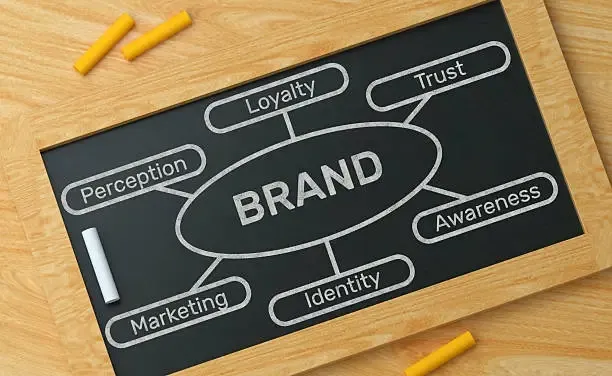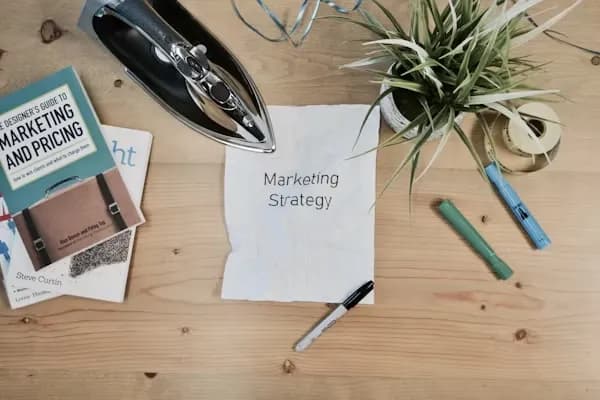In today’s highly competitive market, businesses cannot rely solely on new customer acquisition. A solid strategy focused on retaining your current customers is more important than ever. By implementing effective customer retention strategies, companies can increase customer loyalty, reduce churn, and maximize long-term revenue growth. Let’s explore how to keep your customers coming back in 2025 and beyond.
Customer Retention Strategies
Customer retention strategies are methods businesses use to keep their existing customers engaged, satisfied, and loyal over time. These strategies focus on building long-term relationships rather than simply driving one-time sales. By offering exceptional customer service, personalized experiences, loyalty programs, and ongoing support, companies can encourage repeat purchases and reduce customer churn. Effective customer retention strategies not only increase revenue but also reduce the cost of acquiring new customers. In today’s competitive market, where choices are abundant, retaining a loyal customer base is critical for sustainable growth. Successful brands prioritize retention as a core part of their marketing strategy.
What Is Customer Retention?
Customer retention refers to the ability of a business to keep its existing customers over a period of time. It involves a variety of tactics and techniques designed to encourage repeat purchases, engagement, and long-term relationships. Customer retention strategies aim to increase the lifetime value of your clients while reducing the cost of acquiring new ones.
Why Is Customer Retention Important for Businesses
Retaining a customer is significantly more cost-effective than acquiring a new one. Studies show that increasing customer retention by just 5% can boost profits by 25% to 95%. Loyal customers are more likely to refer others, purchase more often, and provide valuable feedback. In a digital marketplace, where options are abundant, customer retention strategies are critical for sustainability and profitability.
How to Calculate Your Customer Retention Rate (CRR)
To measure your business’s ability to retain customers, use the Customer Retention Rate (CRR) formula:
CRR = ((E - N) / S) x 100
Where:
- E = Number of customers at the end of a period
- N = Number of new customers acquired during the period
- S = Number of customers at the start of the period
This formula provides a percentage value that indicates how well your business retains its customers over time.
Key Metrics for Measuring Customer Retention
Before diving into the best customer retention strategies, it’s essential to monitor key performance indicators (KPIs) that provide insights into customer behavior:
1. Customer Lifetime Value (CLV)
This metric calculates the total revenue a business can expect from a customer throughout their relationship. A higher CLV reflects successful customer retention.
2. Repeat Purchase Rate
This measures the percentage of customers who make more than one purchase. It helps determine how effective your customer retention strategies are in driving repeat business.
3. Customer Churn Rate
Churn rate shows the percentage of customers who stop doing business with you. A low churn rate signals effective retention marketing strategies.
4. Net Promoter Score (NPS)
NPS measures customer satisfaction and loyalty by asking how likely customers are to recommend your business. It’s a strong indicator of long-term retention potential.

17 Proven Customer Retention Strategies for 2025
In 2025, customer expectations are higher, and competition is fiercer than ever. Businesses must go beyond just attracting new customers, they need to retain them. The following 17 proven strategies will help you build stronger relationships, increase lifetime value, and stay ahead of the curve.
1. Personalize the Customer Experience
Customers want to feel seen and understood. Personalization is no longer optional, it’s expected. Use data and customer behavior to tailor emails, recommend relevant products, and adjust web experiences based on preferences. Dynamic content, browsing history, and purchase data should drive communications. This creates a more engaging and satisfying experience that leads to increased loyalty. Brands that use AI-driven personalization see higher retention and conversion rates. Make every customer interaction feel relevant and meaningful by investing in CRM tools and customer segmentation strategies that deliver personalization at scale.
2. Invest in Customer Support
High-quality customer support is a cornerstone of loyalty. In 2025, customers expect help to be fast, efficient, and available 24/7. Offer multiple support channels, live chat, chatbots, phone, and email, to cater to different preferences. Train your support team to respond with empathy, not just information. Speed matters, but so does the quality of interaction. Investing in AI chatbots for basic queries and a human support team for complex issues ensures that all customer concerns are resolved effectively. Support isn’t just reactive, being proactive in assisting customers can drastically increase satisfaction and retention.
3. Leverage Loyalty Programs
Loyalty programs reward repeat behavior and create a reason for customers to return. In 2025, successful programs go beyond basic points systems. They offer tiered rewards, exclusive discounts, VIP perks, and early access to new products. Loyalty platforms integrated with CRM systems allow for personalized rewards based on purchase history. Gamification, like badges, streaks, or milestones, adds engagement and fun. Make sure the rewards are genuinely valuable and easy to redeem. Loyalty initiatives should be accessible across platforms, from mobile apps to in-store purchases, enhancing your retention marketing strategy significantly.
4. Create Educational Content
Providing valuable educational content not only builds trust but also empowers your customers to get the most out of your product or service. Tutorials, how-to guides, webinars, and FAQs help reduce customer frustration and build confidence. Whether it’s teaching customers how to use a software feature or helping them maintain a product, education increases satisfaction and reduces churn. In 2025, interactive content such as videos, live sessions, and community Q&A forums are especially powerful. Educational content also strengthens SEO, improves onboarding, and supports your brand as a helpful, expert authority in your industry.
5. Optimize the Onboarding Process
A smooth onboarding experience sets the tone for the entire customer relationship. Customers who understand how to use your product right away are more likely to stick around. Your onboarding should be simple, helpful, and tailored to different customer needs. For ecommerce businesses, this means clear product instructions, easy returns, and helpful follow-up emails. For software or service providers, offer walkthroughs, video guides, and check-in messages. Track progress and usage during onboarding to address common drop-off points. A great onboarding experience increases customer engagement and boosts retention right from the start.
6. Collect and Act on Feedback
Asking for feedback shows customers that their opinions matter. But collecting it is just the beginning, what really counts is acting on it. Use surveys, product reviews, and customer interviews to gather insights. Then communicate how their feedback has been implemented. This transparency builds trust and shows customers they’re part of your brand’s evolution. Use tools like NPS (Net Promoter Score) and CSAT (Customer Satisfaction Score) to measure sentiment regularly. Feedback loops not only improve products and services but also foster a sense of collaboration, making customers feel like stakeholders in your success.
7. Use Retargeting Campaigns
Retargeting is a smart strategy to bring back potential customers who didn’t convert the first time. Use personalized ads and emails that remind them of items they viewed or abandoned in their cart. In 2025, advanced retargeting can be based on user behavior, time on site, or product interest, creating hyper-relevant ads that boost retention. Combine this with limited-time offers or social proof to increase urgency and trust. Retargeting doesn’t just recapture missed opportunities, it also reinforces your brand in the minds of those already familiar with your products.
8. Implement a Subscription Model
A subscription model provides predictable revenue and sustained engagement. Whether you’re selling software, beauty boxes, or meal kits, offering recurring services creates consistent touchpoints with your customers. Subscriptions also provide convenience, which customers love. Include options like flexible billing, customization, or pause/cancel features to enhance user experience. In 2025, curated subscription experiences tailored to individual preferences are trending. Using subscription analytics can also help you forecast churn and optimize offerings. This model builds long-term loyalty and strengthens the bond between customer and brand by embedding your product into their routine.
9. Provide Proactive Support
Instead of waiting for customers to raise an issue, reach out proactively to offer help. For example, notify them in advance about shipping delays, service outages, or product recalls. Use customer data to identify potential friction points and address them early. This shows that your brand cares about their experience beyond the sale. In 2025, proactive support is often powered by automation and predictive analytics, allowing you to intervene before problems escalate. It builds trust, prevents frustration, and enhances overall satisfaction, key ingredients for increasing customer retention.
10. Celebrate Customer Milestones
Everyone enjoys recognition. Send birthday greetings, loyalty anniversaries, or thank-you messages when customers hit milestones like their 10th purchase. These small, personalized gestures make a big impact. Use CRM tools to automate milestone tracking and create celebratory emails or surprise discounts. In 2025, adding a human touch, even if automated, shows customers they’re valued. Consider social media shoutouts or VIP recognition programs. These moments help build emotional connections with your brand and increase customer loyalty. When customers feel appreciated, they’re far more likely to continue engaging with your business long-term.
11. Offer a Seamless Multichannel Experience
Today’s customers shop across websites, mobile apps, social platforms, and physical stores. Ensuring a consistent, connected experience across all channels is essential. Whether they start browsing on Instagram and complete a purchase on your website or switch between app and desktop, the transition should be smooth. Use unified CRM and inventory systems to sync data across platforms. Provide consistent branding, messaging, and customer service regardless of where customers engage. In 2025, brands that provide a seamless omnichannel experience stand out, because customers value convenience and cohesion in their buying journey.
12. Upsell and Cross-Sell Thoughtfully
Smart upselling and cross-selling can significantly boost average order value and customer satisfaction, when done right. Use data to understand customer needs and suggest relevant upgrades or complementary products. Avoid being pushy; instead, present suggestions as helpful enhancements. For example, recommending a protective case with a phone or offering a premium version of a service can be genuinely beneficial. In 2025, AI-driven product suggestions make this easier and more accurate. Thoughtful upselling builds trust, shows you understand the customer, and contributes to long-term loyalty through increased value.
13. Prioritize Mobile Optimization
With most traffic now coming from mobile, a responsive and user-friendly mobile experience is non-negotiable. Ensure your site loads quickly, offers a smooth checkout process, and is easy to navigate on smaller screens. Include features like Apple Pay, Google Pay, and push notifications for timely updates. In 2025, mobile shopping is more than convenience, it’s a preferred choice. Prioritizing mobile optimization improves customer satisfaction, reduces cart abandonment, and increases repeat purchases. Test your mobile experience regularly across devices to stay competitive in a market where first impressions happen on small screens.
14. Build a Community Around Your Brand
Creating a community helps foster deeper emotional connections with your customers. This could be through a branded Facebook group, a user forum, or exclusive events. Communities allow users to share experiences, offer tips, and support one another. They also give you valuable insights into customer behavior and preferences. In 2025, brand communities are central to retention strategies, they drive engagement, loyalty, and word-of-mouth. Make sure to actively participate in the conversation, highlight members, and provide exclusive content. A strong community turns customers into advocates and reinforces long-term brand loyalty.
15. Launch Referral Programs
Referral programs leverage the trust between friends and family to acquire new customers while reinforcing loyalty among existing ones. Offer incentives like discounts, credits, or freebies for both the referrer and the new customer. In 2025, digital tools make it easy to track and automate referrals. The key is to make participation simple and rewarding. Promote your referral program through email, social media, and after-purchase thank-you pages. When done right, referral programs build a self-sustaining cycle of acquisition and retention, your happy customers become your most powerful marketing tool.
16. Be Transparent and Authentic
Today’s consumers value transparency over perfection. Be honest about pricing, product limitations, return policies, and how you use their data. Share your company values, social impact efforts, and behind-the-scenes stories. Authentic communication creates trust, and trust fuels retention. In 2025, brands that show their human side and admit mistakes while making improvements earn customer respect. Make transparency a part of your culture, not just your marketing. When customers know they can rely on your honesty, they’re more likely to stick with your brand even when competitors try to lure them away.
17. Continuously Innovate Your Offerings
Innovation keeps your brand relevant and exciting. Continuously look for ways to improve your products, services, and customer experiences. Launch new features, test ideas, and gather customer input on potential improvements. Stay informed about market trends and emerging technologies. In 2025, customers gravitate toward brands that evolve with them. Innovation also prevents stagnation and keeps your competitors on their toes. Encourage internal creativity and customer co-creation to generate ideas. When customers see your brand as a leader, not a follower, they’re more inclined to remain loyal and engaged.
Boost Your Customer Retention Strategy with ZMatjar
If you’re ready to take your retention marketing efforts to the next level, consider leveraging the power of the ZMatjar ecommerce platform. Whether you want to build your online store from scratch or expand your existing business, ZMatjar provides all-in-one ecommerce solutions for small businesses.
With built-in features to track retention metrics, personalize the customer experience, and streamline communication, Zmatjar enables you to implement the best client retention strategies effectively. Whether you’re selling digital goods or physical products, ZMatjar helps you create meaningful connections that drive loyalty and repeat purchases.
Launch your online business with ZMatjar oday and elevate your customer relationships.
FAQ
What are the 4 levels of retention strategies?
The four levels are:
- Financial (discounts, coupons)
- Social (relationship building)
- Structural (exclusive access, memberships)
- Customization (personalized experiences)
What is the KPI for customer retention?
Key KPIs include Customer Retention Rate (CRR), Customer Lifetime Value (CLV), Net Promoter Score (NPS), and Repeat Purchase Rate.
What are the 8 C’s of customer retention?
The 8 C’s are: Customization, Convenience, Care, Communication, Competence, Credibility, Commitment, and Consistency.
What is Netflix customer retention strategy?
Netflix focuses on personalized recommendations, a user-friendly interface, and original content to keep users engaged and reduce churn.
What are customer retention strategies?
Customer retention strategies are techniques businesses use to keep existing customers engaged and encourage repeat purchases, such as loyalty programs, excellent service, and personalized marketing.
What are the 3 R’s of customer retention?
The 3 R’s are:
- Retain (keep existing customers)
- Reactivate (re-engage inactive customers)
- Refer (encourage referrals)
What are some common reasons for customer churn?
Poor customer service, lack of engagement, high prices, product dissatisfaction, or better offers from competitors.
How does customer education contribute to improved retention rates?
Educated customers understand how to get value from your product, which reduces frustration and increases satisfaction and loyalty.
How long does it typically take to see improvements in customer retention rates?
Depending on the strategy, you may start seeing improvements within 3–6 months, especially with consistent implementation and data monitoring.

